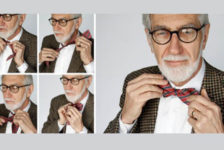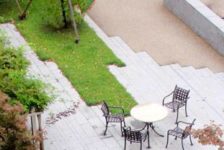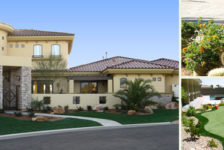
In the fabric of our language, words have different shades of meaning. Each word carries a special sense, reflecting its depth and complexity. However, one word, ‘environment,’ has kind of lost its original meaning, especially when we talk about landscape architecture. People often use it carelessly, and this has watered down its real significance, overshadowing the nuanced understanding that landscape architects want to convey.
At its core, ‘environment’ is not just the background or a general term for our surroundings. It’s a concept that includes the complex relationship between living things and the world around them, stressing how nature and human intervention work together. However, in today’s talk, ‘environment’ has become a catch-all word, casually used to describe anything from city spaces to natural places, often missing the subtleties of landscape architecture.
On the flip side, the word ‘landscape’ carries the idea of intentional design and human involvement. Landscape architecture goes beyond just the basic idea of ‘environment’ and gets into the detailed planning of spaces that make us feel things, promote sustainability, and blend with the natural world. But the way we use ‘environment’ and ‘landscape’ interchangeably blurs the lines between just being surrounded by things and purposeful design.
In this discussion, we need to ask how this simple mix-up in words affects how we see and do landscape architecture. Using ‘environment’ like we do makes people think of the discipline as just a part of environmental science, rather than understanding its unique role in shaping how things look and feel around us.
The mix-up is clear in discussions about building cities. Urban planners and policymakers often talk about the ‘urban environment’ without recognizing the nuanced approach landscape architects bring to the design of city spaces. The city isn’t just a passive ‘environment’ but a purposeful ‘landscape’ that can influence how people act, build communities, and add to the well-being of those living there.
Moreover, using ‘environment’ casually takes away from the importance of sustainability in landscape architecture. Sustainable design isn’t just about being eco-friendly; it’s about making landscapes that last, adjust, and contribute positively to nature. When ‘environment’ becomes a broad and vague word, the urgency of designing sustainable landscapes gets lost in the general talk about saving the environment.
The mix-up doesn’t stop at just words; it affects how landscape architecture is put into action. When we use ‘environment’ like we do, the essence of intentional design gets watered down. Landscape architects aren’t just watching nature happen; they’re creators who mix the built and natural worlds into a seamless and purposeful design. Using ‘environment’ casually ignores the focus on human experience, cultural context, and the artistry of putting spaces together.
The misappropriation of ‘environment’ also has consequences for how landscape architecture fits into collaborations with other disciplines. When ‘environment’ is thrown around without care, the specific contributions of landscape architects often get overlooked. This makes it harder to see landscape architecture as a unique discipline that connects art, science, and taking care of the environment.
To fix this mix-up in words, we need to bring back the richness and clarity of language when we talk about the work of landscape architects. Using ‘landscape’ instead of ‘environment’ is a small but important step in reminding everyone of the discipline’s identity and helping people understand its role in shaping the world around us.
In conclusion, it’s crucial to remember that words matter, especially in landscape architecture. Using ‘environment’ without thinking waters down the intentional and creative aspects of landscape design. If we switch back to using ‘landscape’ more often, we can revive a more accurate appreciation for the discipline, highlighting its role as a dynamic force shaping the spaces we live in, both in looks and experience. It’s time to challenge the mix-up in words and bring back the depth and clarity that language should offer in understanding and celebrating the artistry of landscape architecture.
—
Lucila Silva-Santisteban, MLA, B.ARCH, ASLA, is Colombian-Peruvian landscape architectural and urban designer based in New York City, with 10 years of professional experience in the landscape, architecture, and urban design field, both in her home country of Colombia and in the US. She is currently part of the design team at the NY office of Enea Landscape Architecture located in Brooklyn, NY. As a Project Designer and Coordinator she focuses on creating beautiful and sustainable landscapes on local and international projects drawing from her diverse experience.
Lucila holds a Master’s in Landscape Architecture from the Rhode Island School of Design and a B.Arch. from the Pontificia Universidad Javeriana in Bogotá, Colombia. Founder of LAUD Research initiative—a landscape architecture design research-focused exploration—she studies solutions through visualization and mapping in response to social-ecological issues of the landscape caused by climate change and current political-economical models affecting our world.
Published in Blog, Cover Story, Featured






